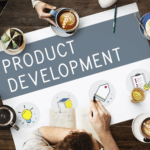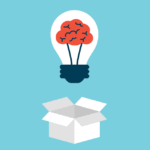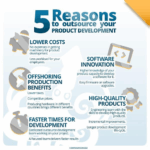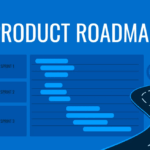Are You Mixing Up Procurement and Sourcing? You’re Not Alone. Let’s face it—terms like procurement and sourcing get thrown around like they’re the same thing.
If you want to refine the business and increase profits, you cannot afford to get this wrong. This blog lays it all out in a simple manner and with practical examples. Procuring and sourcing will be defined, how they interrelate, and the reasons for both being important. The second part deals with sourcing: getting the right match.
What Is Sourcing?
If sourcing is the job of making the perfect match, then in this case, for the supply chain. It is working through the entire, strategized search to find the right suppliers who tick all your boxes. Not just look for the cheapest; you want quality, reliability, and value. Sourcing-the-process involving raw materials, service, and finished goods-finds the “who, where, and how much.”
The goal? We build long-term, cost-effective partnerships that help your business grow stronger.
Core Activities:
- Supplier Identification: Researching potential vendors who can meet business requirements.
- Market Analysis: Assessing market trends to understand supplier capabilities and industry standards.
- Negotiation: Discussing terms to ensure favorable pricing, quality, and delivery schedules.
Goals of Sourcing:
- Cost Efficiency: Securing the best value without compromising on quality.
- Risk Mitigation: Diversifying the supplier base to reduce dependency and potential disruptions.
- Quality Assurance: Ensuring suppliers adhere to set standards and deliver consistent quality.
Types of Sourcing:
- Single Sourcing: Partnering with one supplier for a specific need, fostering strong relationships, but increasing dependency.
- Multiple Sourcing: Engaging multiple suppliers to mitigate risks and encourage competitive pricing.
- Global Sourcing: Explored international suppliers to capitalize on global efficiencies and innovations.
In today’s dynamic market, effective sourcing is more than just finding suppliers; it’s about building strategic partnerships that align with the company’s long-term objectives.
What is Procurement?
Procurement encompasses the end-to-end process of acquiring goods and services necessary for business operations. It’s a comprehensive function that goes beyond mere purchasing.
Procurement Lifecycle:
- Needs Assessment: Determining what goods or services are required.
- Requisition: Formalizing the request for the identified needs.
- Supplier Selection: Choosing the appropriate vendor, often based on sourcing insights.
- Purchase Order Creation: Documenting the order specifics and terms.
- Receipt and Inspection: Receiving the goods/services and ensuring they meet quality standards.
- Payment Processing: Completing the financial transaction as per agreed terms.
Goals of Procurement:
- Operational Continuity: Ensuring the timely availability of necessary resources to prevent disruptions.
- Cost Management: Optimizing spending to achieve budgetary objectives.
- Compliance: Adhering to internal policies and external regulations during acquisitions.
Types of Procurement:
- Direct Procurement: Acquiring items directly involved in production, like raw materials.
- Indirect Procurement: Purchasing goods/services that support operations but aren’t part of the final product, such as office supplies.
Modern procurement is evolving, with a significant shift towards automation. According to a 2024 CIPS survey, only 2% of organizations have fully automated procurement processes, but over half are pursuing greater automation to enhance efficiency.
Key Differences Between Procurement and Sourcing
While procurement and sourcing are interconnected, they have distinct focuses: Understanding these differences is crucial. As the saying goes, “Don’t put all your eggs in one basket.” Diversifying sourcing strategies can prevent potential pitfalls in procurement.
| Aspect | Sourcing | Procurement |
| Focus | Identifying and evaluating potential suppliers | Acquiring goods and services for business operations |
| Objective | Building a reliable supplier base | Ensuring timely and cost-effective acquisition of necessary resources |
| Process Stage | Upstream activity, preceding procurement | Downstream activity, involving purchasing and payment |
| Scope | Strategic, long-term supplier relationships | Tactical, encompassing day-to-day purchasing activities |
| Risk Management | Mitigating supplier-related risks | Managing risks associated with purchasing and contract fulfillment |
How Sourcing and Procurement Work Together
Sourcing and procurement are two sides of the same coin. Effective sourcing lays the groundwork for efficient procurement. For instance, a company launching a new product needs to source quality components (sourcing) and then purchase them in the right quantities at the right time (procurement). This synergy ensures that operations run smoothly and cost-effectively.
Common Misconceptions
- Sourcing and Procurement are Identical: While related, sourcing focuses on supplier selection, whereas procurement deals with the purchasing process.
- Procurement is Just Buying: Procurement involves strategic planning, compliance checks, and relationship management, not just purchasing.
- Sourcing Ends After Supplier Selection: Ongoing supplier evaluation and relationship management are integral to sourcing.
Real-World Examples
- Aerospace Industry: Global aerospace firms are increasingly sourcing parts from India to address Western supply chain crises. Companies like Airbus have awarded contracts to Indian suppliers, showcasing strategic sourcing decisions.
- Retail Sector: Major supermarkets’ pursuit of lower shrimp prices has led to supplier exploitation in countries like Indonesia and India, highlighting the consequences of poor sourcing decisions.
Challenges in Sourcing vs. Procurement
- Procurement Challenges: Managing complex processes, ensuring timely deliveries, and aligning with budgets can be tough. Staying compliant with evolving regulations is another hurdle that procurement teams often face. Mismanaged procurement may cause financial leaks, wasted resources, and poor supplier relations.
- Sourcing Challenges: Vetting suppliers for quality and ethics is easier said than done. Global sourcing faces currency fluctuations, trade barriers, and unexpected delays. One bad apple (a poor supplier) can spoil the bunch, risking reputation and delivery. According to a 2023 Deloitte survey, 70% of CPOs identified supplier risk as their top concern.
Procurement leaders are doubling down on supplier transparency and digital tools.
Technology’s Role in Procurement and Sourcing
Technology has become the backbone of modern procurement and sourcing.
Procurement software automates ordering, approvals, and payments—saving time and reducing errors. Sourcing platforms use AI to match buyers with best-fit suppliers worldwide.
According to Statista, the global eSourcing market is projected to reach $11.2 billion by 2027.
Artificial Intelligence and Machine Learning are also revolutionizing spend analytics and supplier vetting.
AI-trained tools in intelligent procurement can predict delays and spot contract problems before they blow up into a major issue. Whereas with classical software platforms, sources having respective dimensions of sustainability, diversity, and compliance are manipulated. As the old saying goes, “An ounce of prevention is worth a pound of cure.” Buying and sourcing with tech can avert troublesome situations before setting business lines on their heads.
Optimal Procurement-and-Sourcing Strategies
Keep Moving. If you’re not moving, you’re falling behind. To survive, businesses must sharpen their sourcing and procurement practices.
The following steps allow them to stay ahead of the game.
- Centralization of Data:
The following data sources constitute the sources of procurement, all held in one place using uniform platforms.
- Review Supplier Contracts:
The contracts should always be put under scrutiny to validate their relevancy; standards for performance must also be systematically checked.
- Analytics:
This is an area where spending data is analyzed to provide areas where the company may save costs and gain better terms in negotiations.
- Build Supplier Relationships:
Treat suppliers as partners, not just vendors. The goodwill will pay off in the long run.
- Invest in Training:
Impart knowledge to teams regarding market trends, negotiation skills, and compliance.
6. Choose Strategic Partners:
Avoid suppliers that only fulfill orders. Look for innovators and collaborators.
A good example would be Brand New MD, a sourcing company of the highest caliber where excellence is their trademark. They know about the art of sourcing and the science of procurement. Are you ready to source smarter and procure better? Look no further than BrandNewMD!
Final Thoughts: Procurement vs. Sourcing – Know the Difference, Master the Strategy
Mixing Apples and Oranges, Each is necessary, but either procurement or sourcing affects the other. Sourcing lays the scene by determining whom to work with—suppliers. Procurement runs the show, ensuring that contracts (called scripts) are fulfilled and that delivery performances meet expectations.
Failure to distinguish between procurement and sourcing will mean a lot of issues: inefficiencies, missed opportunities for savings, and reputation damage. If they do each well, they can outrun their competitors.
So, we summarize:
- Sourcing is strategic and aims to find the right supplier.
- Procurement is operational and involves managing the whole purchasing journey.
- Both cooperate to ensure smooth functioning and cost-effective solutions for the supply chain.
Outdated systems and misconceptions will not help your business. Align your procurement and sourcing objectives today, and see your ROI soar! For expert sourcing help, visit Brand New MD, the best sourcing company for your business needs.
They’ll help you bridge the gap between procurement and sourcing like never before.
Also, check out these top picks from BNMD, specially curated to enhance your knowledge.










